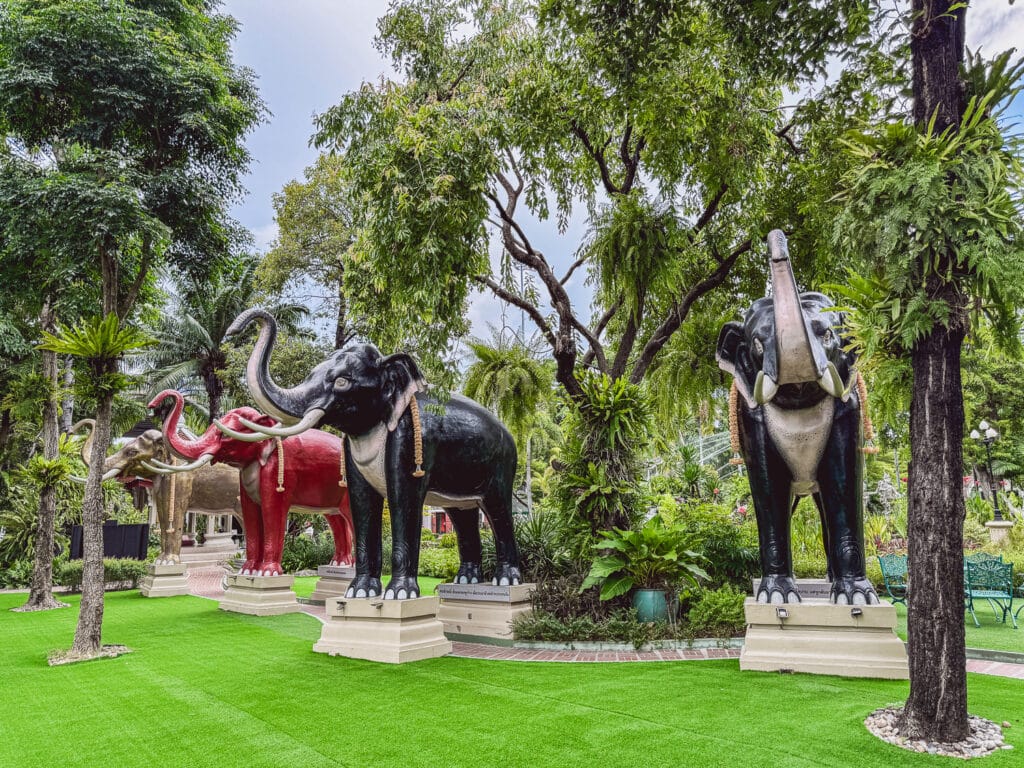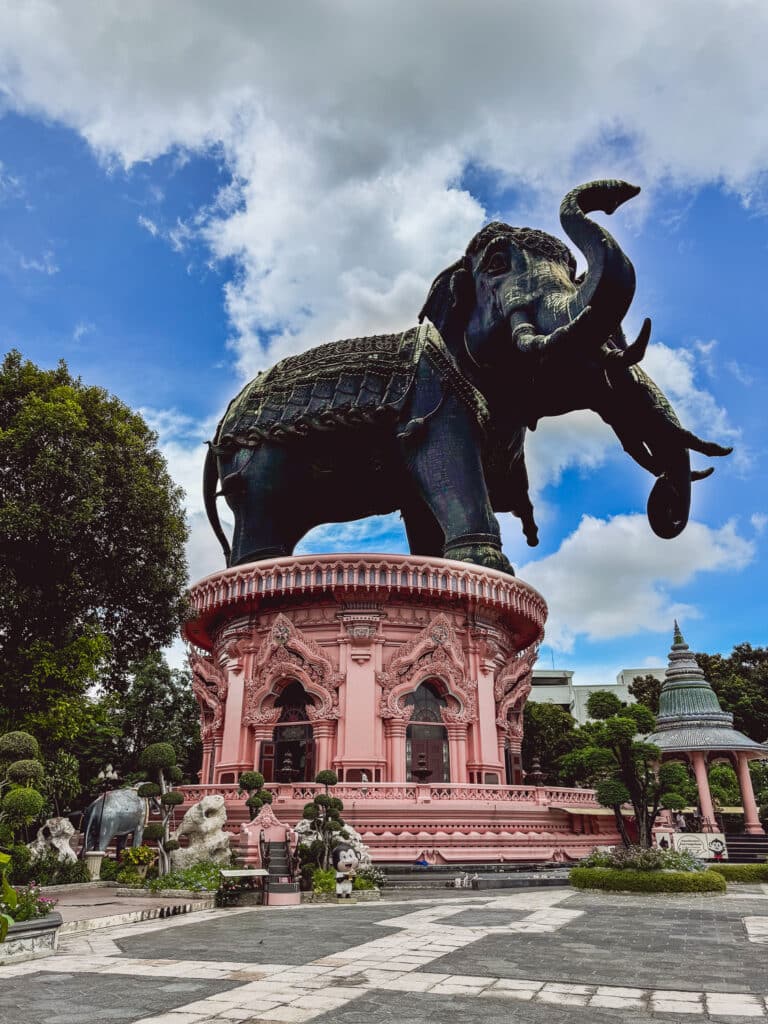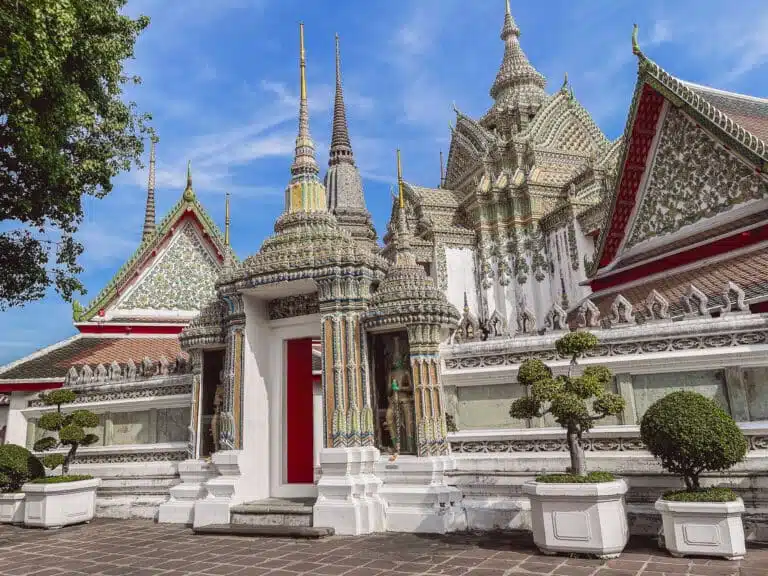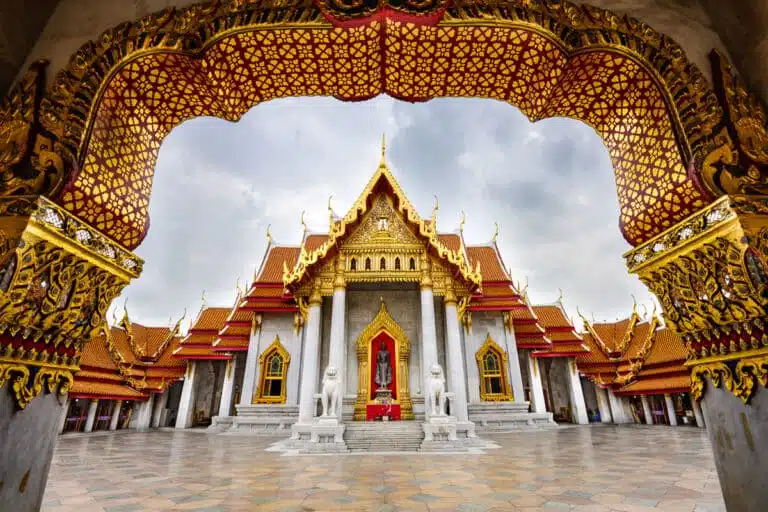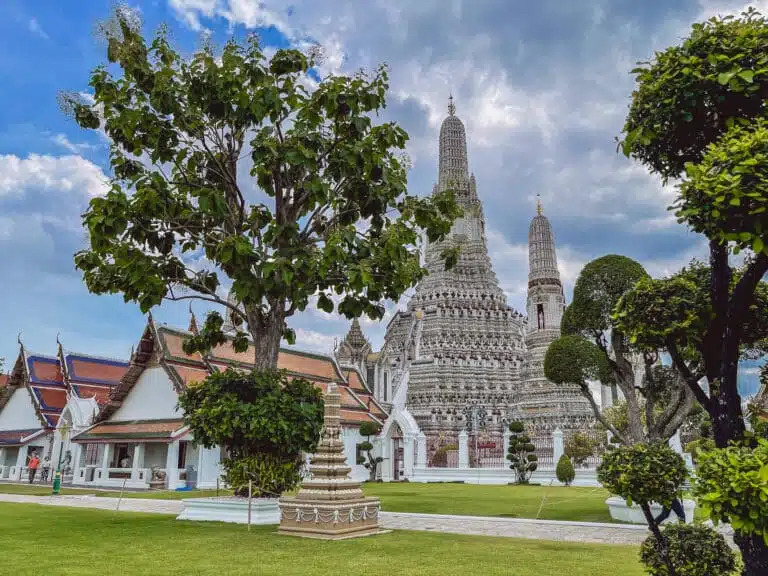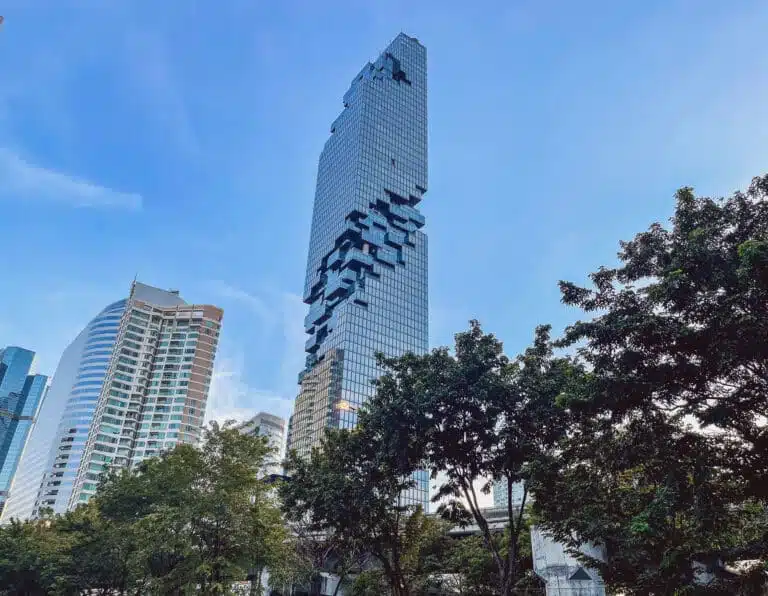Erawan Museum: Visit the three-headed elephant statue
A little off the beaten track in Bangkok’s south is a little gem just waiting to be discovered: The Erawan Museum.
The fascinating museum, which is located in Samut Prakan, a suburb of Bangkok, is not only a highlight for art and culture enthusiasts, but also an architectural masterpiece.
In this blog post, we take you on a tour of the Erawan Museum.
We show you its spectacular exhibitions and the incredible three-headed elephant statue, which is the museum’s landmark and can be seen from afar.
We’ll also give you lots of tips for your visit.
The Erawan Museum is an architectural wonder
The Erawan Museum, located in Samut Prakan, a suburb of Bangkok, can be recognized from afar by its huge three-headed elephant statue, which rises a proud 29 metres into the air.
The statue symbolizes the elephant god Erawan (or Airavata) from Hindu mythology, who is considered the bearer of the worlds.
The statue alone is a real eye-catcher and offers countless photo opportunities. But the real highlight is hidden inside the museum.
Tip: Book your discounted admission ticket for the Erawan Museum in advance without queuing here.

A journey through the floors of the Erawan Museum
The Erawan Museum is divided into three levels, which symbolically represent the three worlds of Buddhist cosmology: the underworld, the earth and the sky.
1. the underworld (basement):
When you enter the museum, you first reach the basement, which represents the underworld.
Here you will find an impressive collection of antique vases, ceramics and religious artifacts.
The exhibits offer a fascinating insight into the rich cultural history of Thailand and Asia.
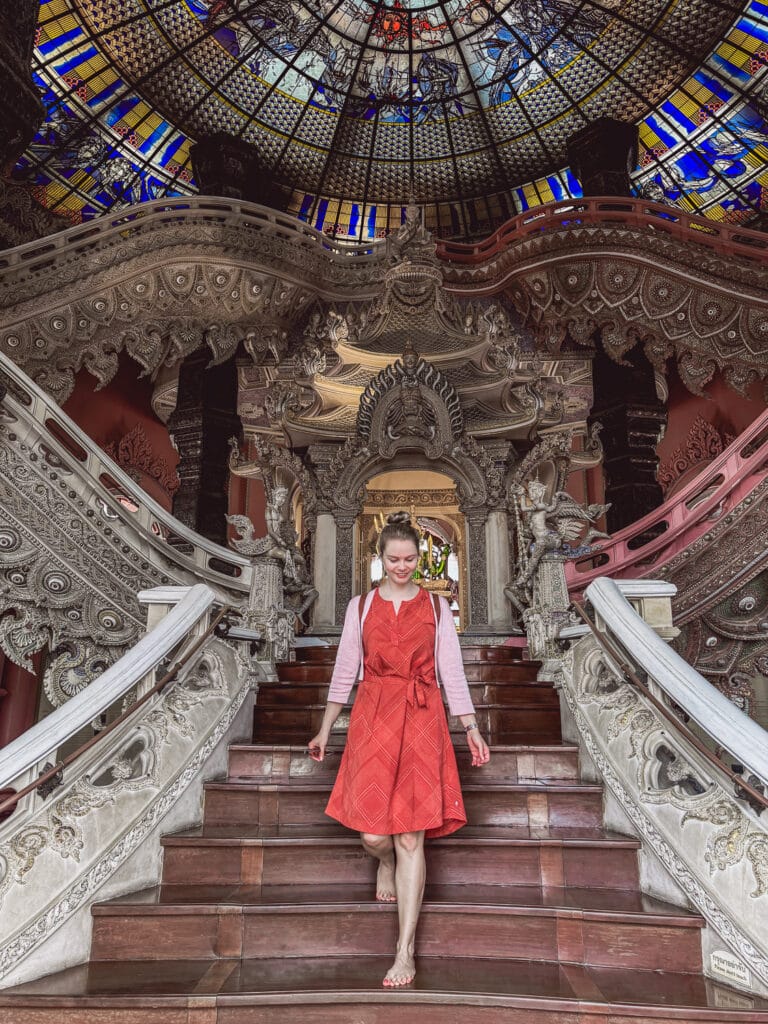
2. the earth (main floor):
The main floor symbolizes the earthly world and is particularly beautiful and elaborately designed.
The centerpiece of this area is a breathtaking staircase surrounded by detailed murals and stained glass windows.
The artworks tell stories from Buddhist mythology and are a masterpiece of Thai craftsmanship.
On the main floor you will also find an impressive collection of Buddha statues from different eras and styles.
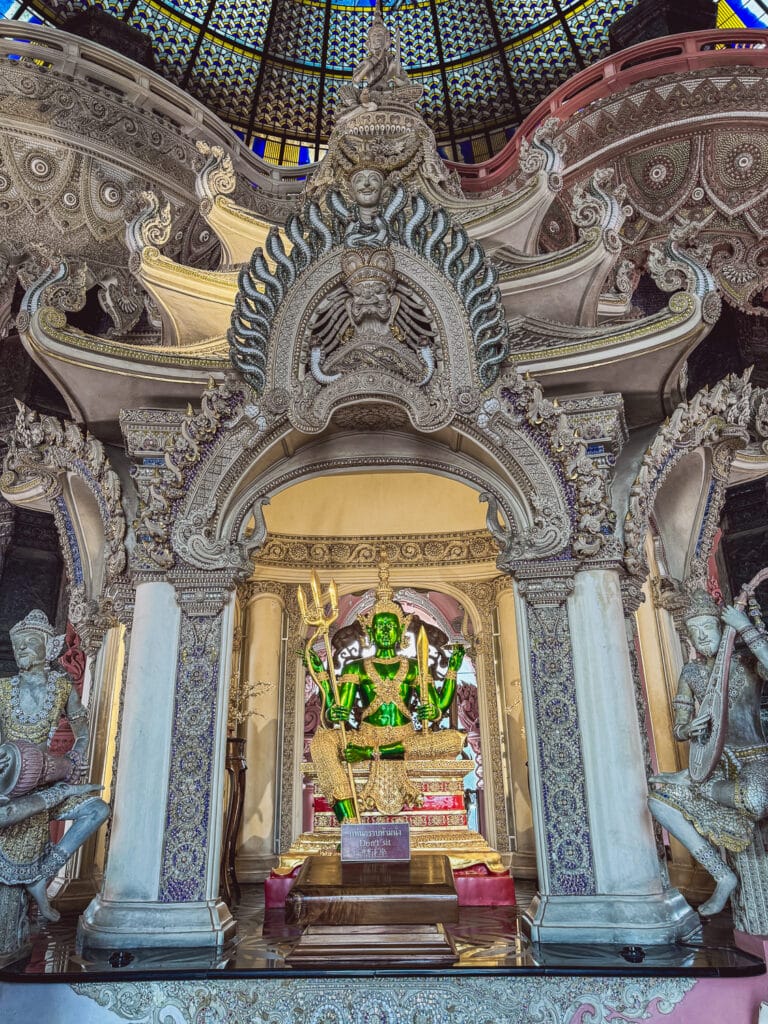
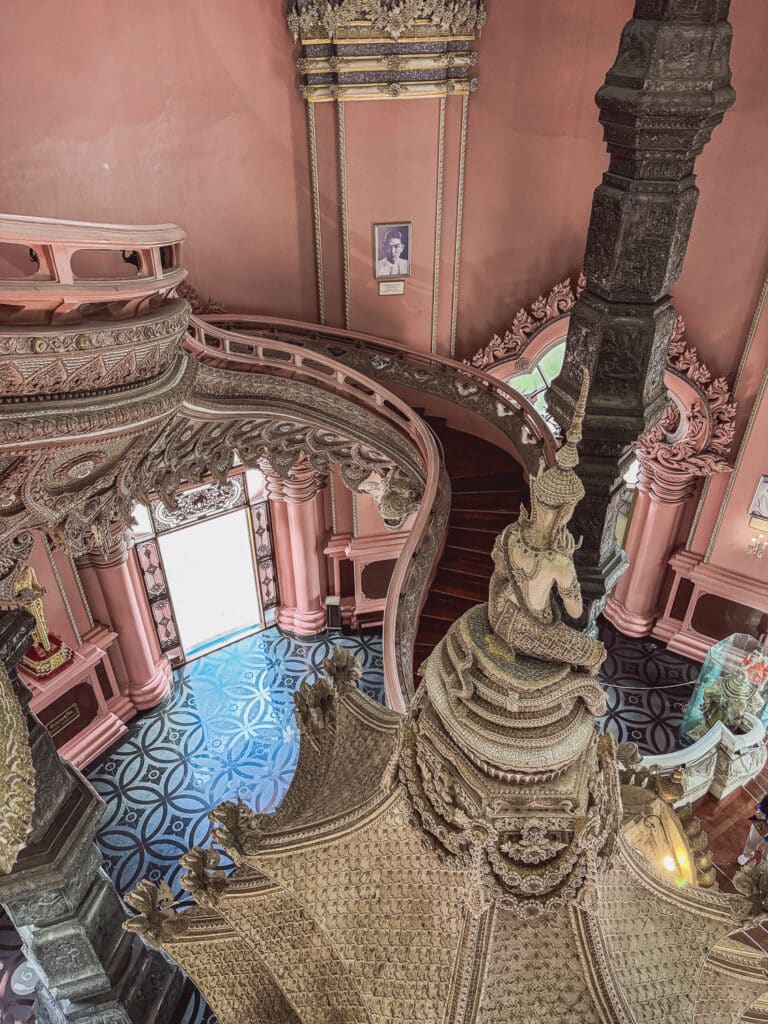
3. the sky (upper floor):
The upper floor, which represents the sky, is located inside the giant elephant statue.
This area is particularly spiritual and peaceful – many believers retreat to the top floor to pray.
In the center is a large Buddha statue that radiates a great aura of calm and serenity.
Tip: Combine the Erawan Museum with an excursion to the ancient city of Muang Boran.
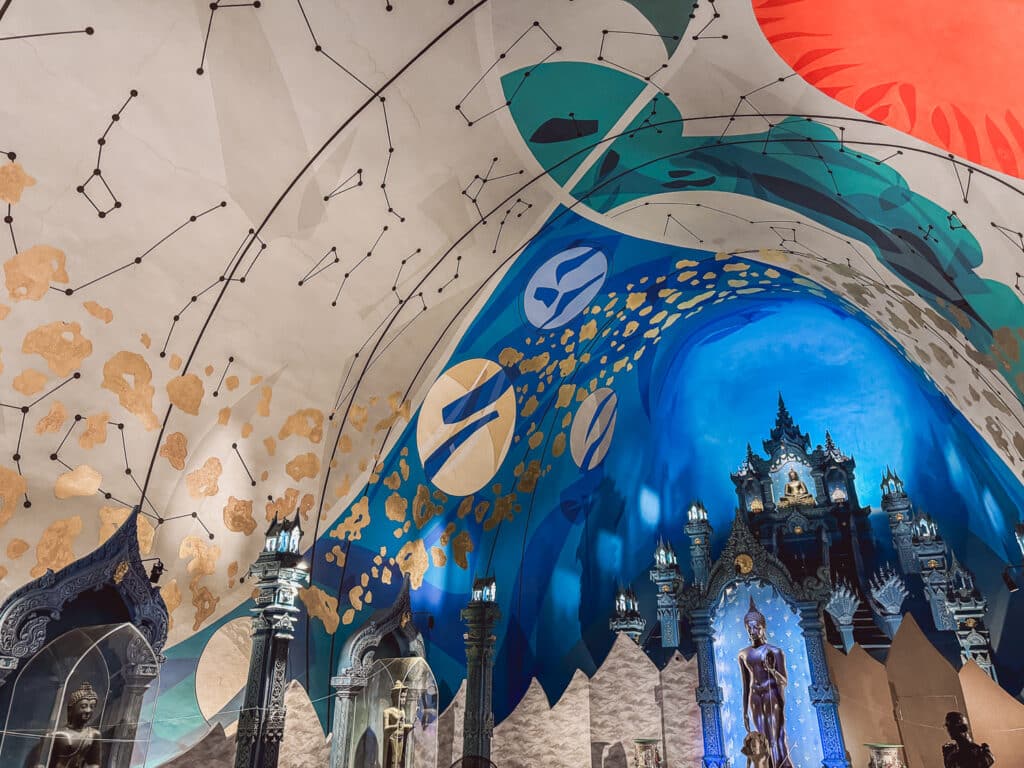
The Erawan Museum is surrounded by a beautiful garden
Another highlight of the Erawan Museum is the elaborately designed garden that surrounds the museum.
The garden is not only a green oasis of peace and relaxation, but also a living work of art that emphasizes the connection between nature and spirituality.
You will be greeted by artistically designed ponds, exotic plants and lovingly tended flowerbeds that invite you to take a leisurely stroll.
Throughout the garden you will find impressive statues and sculptures of elephants, which depict mythological and religious motifs and are harmoniously integrated into the landscape.
The garden also offers plenty of seating from which you can enjoy the great view of the giant three-headed elephant statue and the surrounding nature.
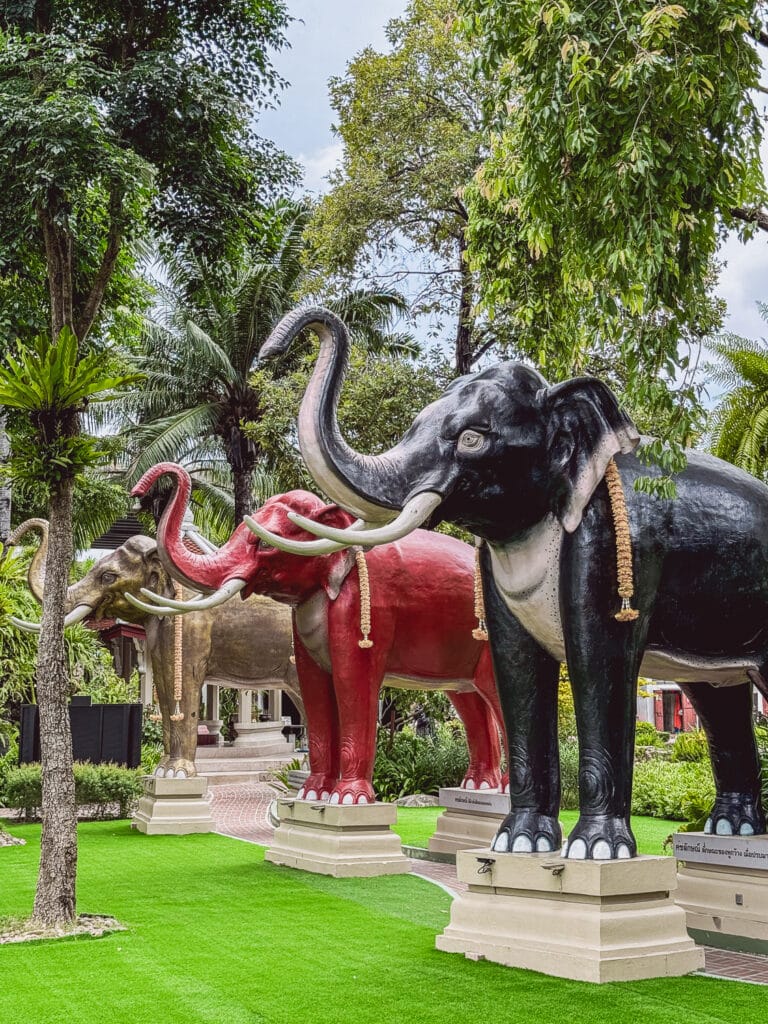
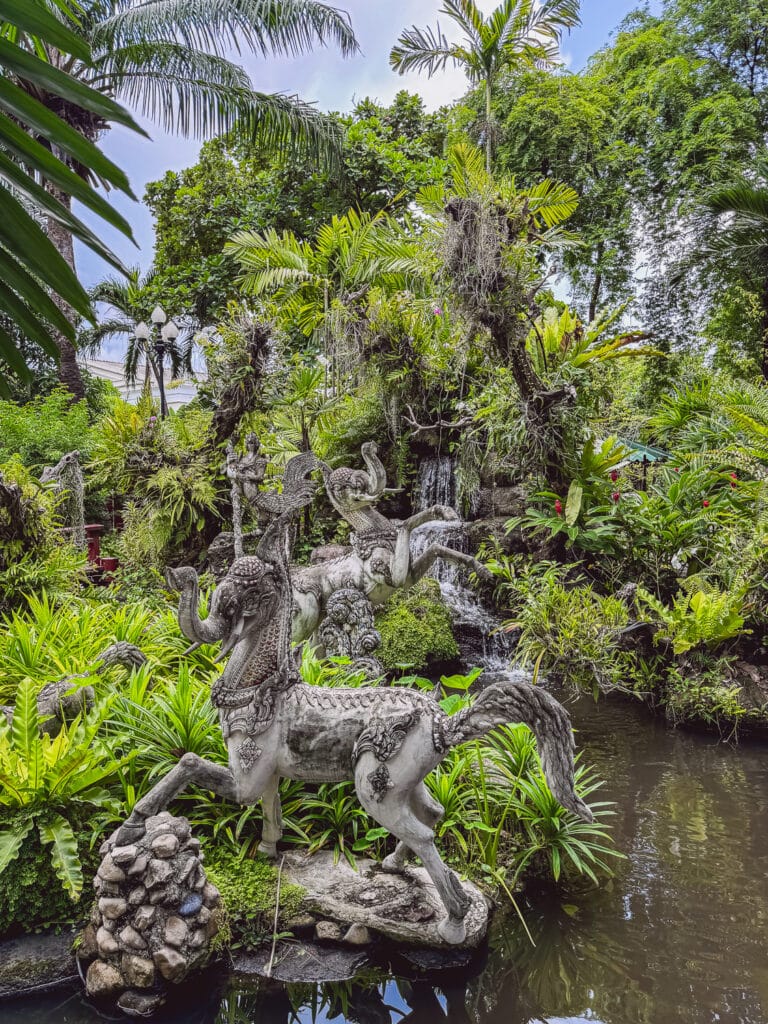
The importance of the Erawan Museum
The Erawan Museum was founded by Khun Lek Viriyapant.
The wealthy businessman and passionate art collector has made it his mission to preserve Thailand’s cultural heritage and make it accessible to the public.
Every detail of the museum has been carefully planned and designed to not only exhibit works of art, but also to provide a spiritual journey that inspires visitors to learn more about Buddhist philosophy.
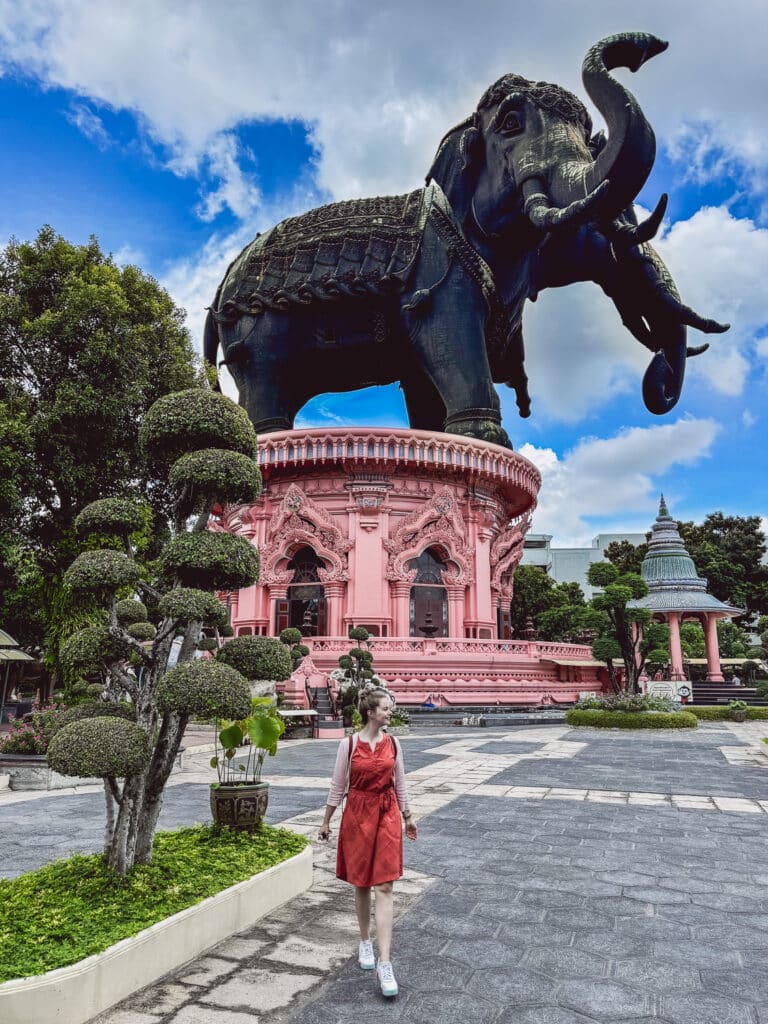
Tips for your visit to the Erawan Museum
- How to get there: The Erawan Museum is located around 25 to 30 minutes from Bangkok’s city center. The easiest way to get there is by cab or with the BTS Skytrain (station: Pu Chao or Chang Erawan). From there, you can walk for 20 minutes or take a cab.
- Shuttle service: From 11 am, the museum offers a shuttle to the BTS Skytrain (Chang Erawan station) every half hour for 20 baht per person.
- Opening hours: The museum is open daily from 9:00 to 19:00.
- Admission: The entrance fee is 400 baht for adults and 200 baht for children (as of 2024).
- Clothing: As the museum also includes a temple, please dress appropriately (knees and shoulders covered). You must take off your shoes in the temple.
- Photography: Photography is permitted, but without flash to protect the works of art. Filming is not officially permitted on the upper floor.
- Food and drink: There is a restaurant on site, a nice café and a few other stalls selling snacks and drinks. So you can easily find something to eat.
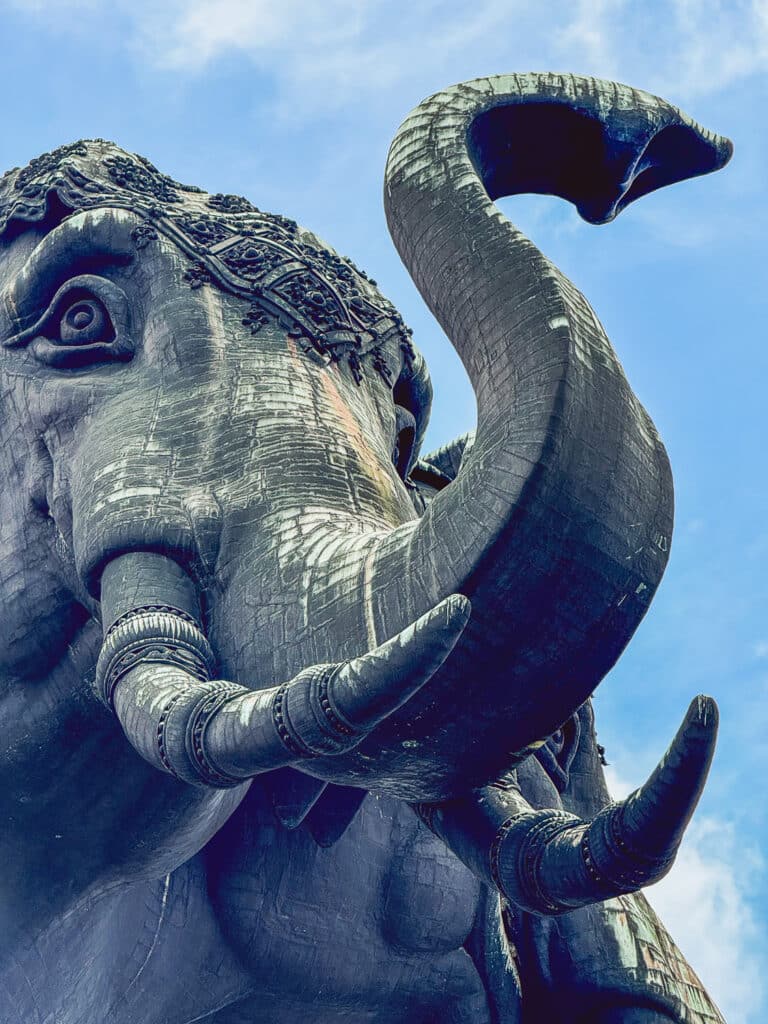
A brief summary of the Erawan Museum in Bangkok
The Erawan Museum combines art, culture and spirituality in a unique way and offers you great insights into Thai culture and Buddhist philosophy.
The next time you are in Bangkok, we can only recommend this extraordinary place to you.
We were there during the week in the morning and it was pleasantly quiet and empty – no comparison to the bustling temples in the city center, such as Wat Pho, Wat Arun or the Grand Palace.
Tip: Book your discounted admission ticket for the Erawan Museum in advance without queuing here.

Frequently asked questions about the Erawan Museum in Bangkok
Finally, we answer a few frequently asked questions about the Erawan Museum in Bangkok. You can find an overview of all Bangkok sights here.
Wo befindet sich das Erawan Museum in Bangkok?
Das Erawan Museum liegt in Samut Prakan, einem Vorort von Bangkok, etwa 30 Minuten vom Stadtzentrum entfernt. Es ist leicht mit dem Taxi oder dem BTS Skytrain (Station: Pu Chao oder Chang Erawan) und einer anschließenden kurzen Taxifahrt erreichbar.
Was ist das Besondere am Erawan Museum?
Das Erawan Museum ist bekannt für seine beeindruckende dreiköpfige Elefantenstatue, die 29 Meter hoch ist. Das Museum selbst ist in drei Ebenen unterteilt, die die buddhistische Kosmologie darstellen, und bietet eine umfangreiche Sammlung von Kunstwerken und Antiquitäten.
Welche Exponate gibt es im Erawan Museum zu sehen?
Das Museum beherbergt eine Vielzahl von Exponaten, darunter antike Vasen, Keramiken, religiöse Artefakte und Buddha-Statuen aus verschiedenen Epochen und Stilen. Jede Etage des Museums bietet einzigartige und kunstvolle Ausstellungen.
Wie sind die Öffnungszeiten des Erawan Museums?
Das Erawan Museum ist täglich von 9:00 bis 19:00 Uhr geöffnet. Wir empfehlen euch, früh am Tag anzukommen, um die Menschenmassen zu vermeiden und genügend Zeit vor Ort zu haben.
Wie viel kostet der Eintritt zum Erawan Museum in Bangkok?
Der Eintrittspreis beträgt 400 Baht für Erwachsene und 200 Baht für Kinder (Stand: 2024).
Was sollte man bei einem Besuch im Erawan Museum beachten?
Da das Museum auch religiöse Stätten umfasst, ist es wichtig, angemessene Kleidung zu tragen. Schultern und Knie sollten bedeckt sein. Natürlich solltet ihr euch auch respektvoll gegenüber den Exponaten und der Einrichtung verhalten.
